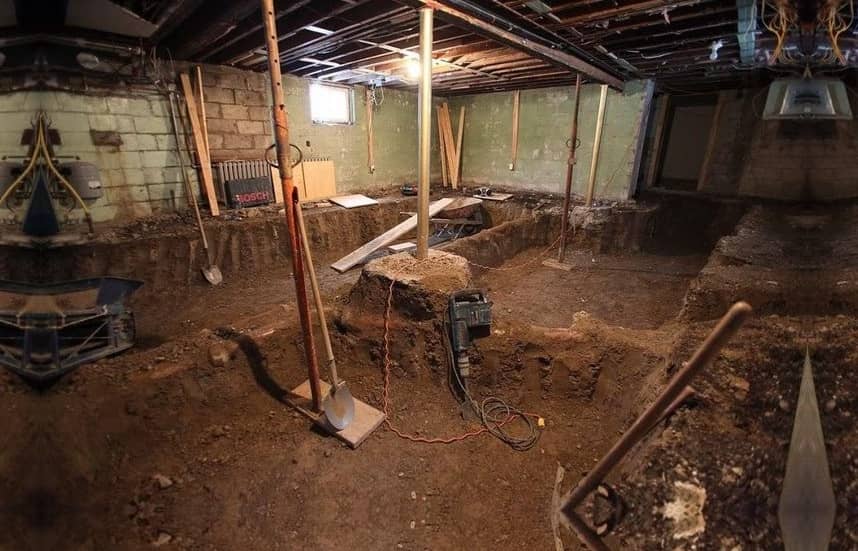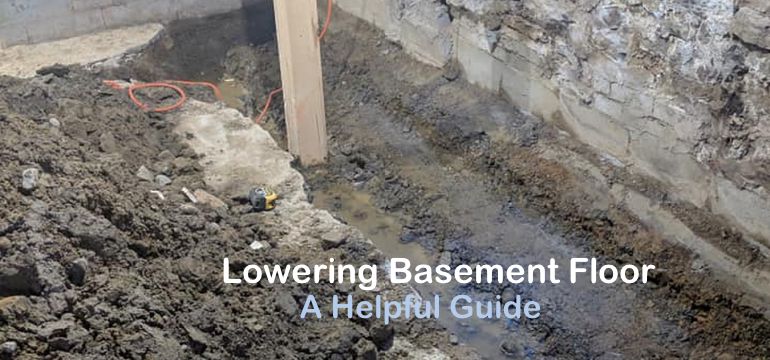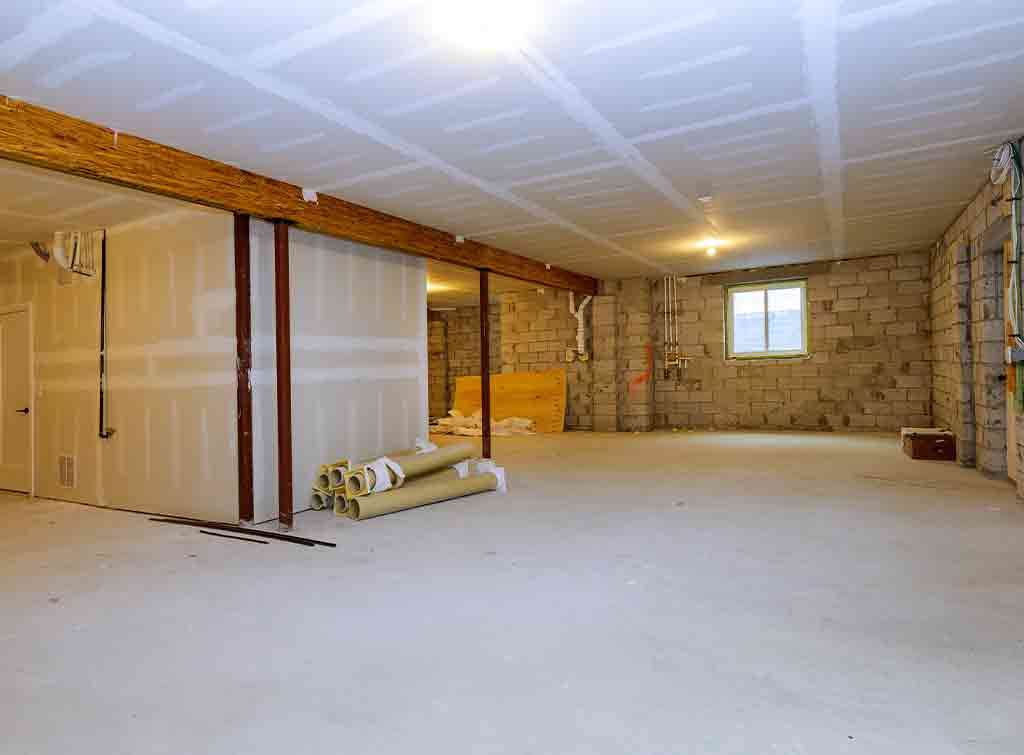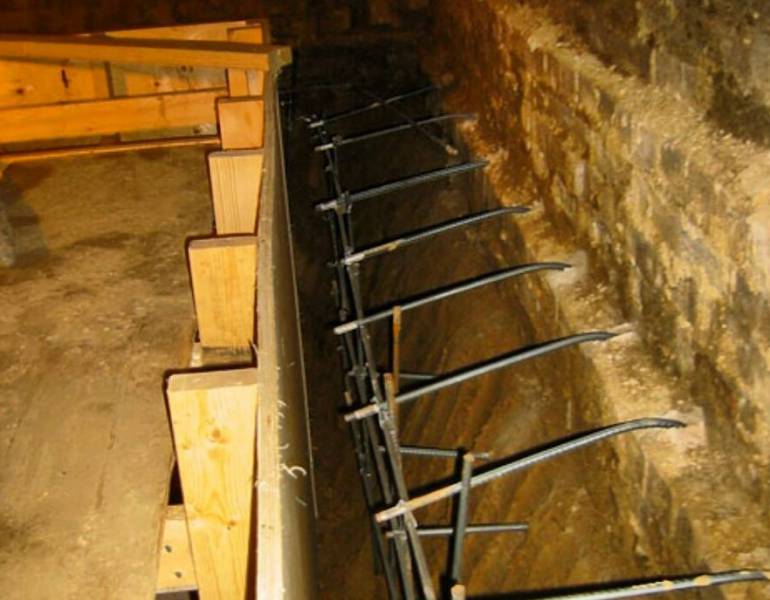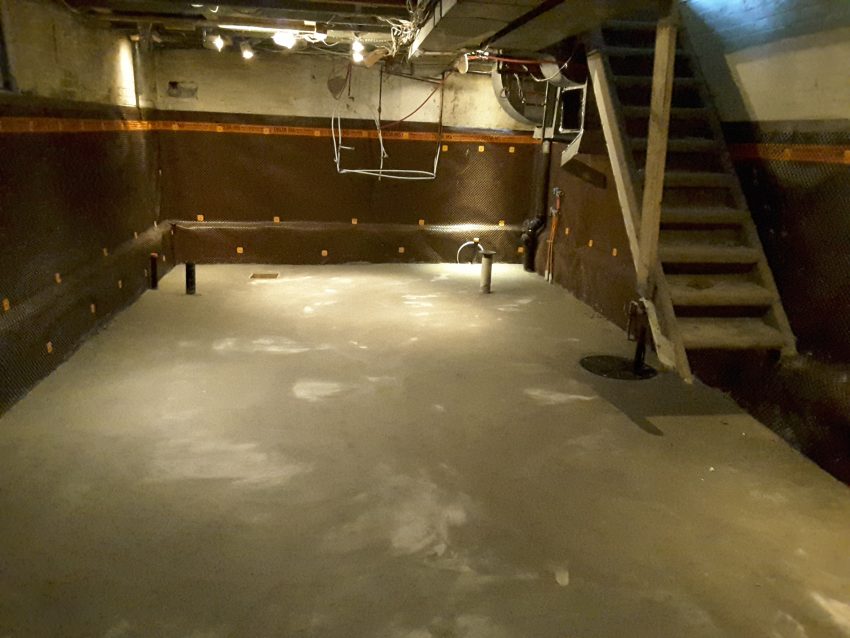Understanding the Importance of Lowering a Basement Floor
Lowering a basement floor can offer numerous benefits to homeowners. It not only increases the headroom in the basement but also creates additional usable space. Let’s discuss the importance of lowering a basement floor and how it can enhance the functionality and value of your home.
- Increased Livable Space: One of the primary reasons homeowners opt to lower their basement floor is to gain more livable space. By lowering the floor, you can transform your basement from a cramped, low-ceilinged area into a spacious and comfortable living area. This additional space can be utilized for various purposes, such as creating a home office, a recreational room, or even an extra bedroom.
- Enhanced Functionality: A basement with a low ceiling can limit the types of activities you can enjoy in that space. By lowering the floor, you can open up new possibilities. You might be able to install taller cabinets, set up exercise equipment without hitting your head, or even create a home theater with proper acoustics. The increased headroom allows for more flexibility in designing and utilizing the basement space.
- Improved Property Value: Lowering a basement floor can also increase the value of your property. A finished basement with adequate headroom is a desirable feature for potential buyers. It adds square footage to your home and presents the opportunity for more functional living areas. This can make your property more attractive in the real estate market, potentially leading to a higher resale value.
- Better Insulation and Moisture Control: Lowering a basement floor can provide an opportunity to improve the insulation and moisture control of the space. During the process, you can add insulation materials to the walls and floor, preventing heat loss and reducing energy bills. Additionally, if you encounter any moisture-related issues during the lowering process, they can be addressed and resolved, resulting in a drier and healthier basement environment.
- Future Expansion Potential: By lowering the basement floor, you create the potential for future expansion. If you anticipate the need for additional living space in the future, such as for a growing family or for accommodating aging parents, lowering the basement floor now can provide a solid foundation for future renovations or additions.

Factors Affecting the Cost of Lowering a Basement Floor
Lowering a basement floor involves a complex process that requires careful consideration of several factors. These factors play a significant role in determining the overall cost of the project. Let’s findout the key factors that influence the cost of lowering a basement floor.
- Size and Layout of the Basement: The size and layout of your basement are crucial factors in determining the cost of lowering the floor. A larger basement will require more materials and labor, resulting in higher costs. Similarly, if your basement has complex features like multiple rooms, existing plumbing, or electrical systems, the project will become more intricate and expensive.
- Depth of the Lowering: The depth to which you want to lower the basement floor will have a direct impact on the cost. Deeper excavations require more labor, equipment, and materials, which can significantly increase the overall expenses. It is essential to carefully consider the depth based on your requirements and budget.
- Soil Conditions: The type and condition of the soil in your area can affect the cost of lowering a basement floor. If your soil is stable and easy to excavate, the project may be relatively straightforward and less expensive. However, if the soil is rocky, sandy, or contains a high water table, additional measures, such as shoring or dewatering, may be necessary, leading to higher costs.
- Structural Modifications: Lowering a basement floor can involve structural modifications to ensure the stability and integrity of your home. If your basement walls need reinforcement or underpinning, the cost will increase. Similarly, if any load-bearing walls need to be relocated or supported during the process, additional expenses will be incurred.
- Plumbing and Electrical Considerations: If your basement currently has plumbing or electrical systems in place, they will need to be relocated or modified during the floor-lowering process. This can add to the overall cost, especially if extensive changes are required. It is essential to consult with professionals to assess the scope of these modifications and factor them into your budget.
Exploring Different Methods for Lowering a Basement Floor
Lowering a basement floor can be achieved using various methods, each with its advantages and considerations. Below are some of the different methods commonly used to lower a basement floor and provide insights into their benefits and potential challenges.
Traditional Underpinning: Traditional underpinning involves excavating sections of the basement floor and reinforcing the existing foundation walls. This method is typically used when the soil conditions are stable and suitable for excavation. It allows for a significant lowering of the basement floor and provides a solid foundation for future renovations. However, it can be a time-consuming and costly process, requiring careful planning and expertise.
Bench Footing: Bench footing is another popular method for lowering a basement floor. It involves excavating sections of the basement floor and constructing a new concrete footing or bench along the perimeter of the foundation walls. This method allows for a gradual slope in the new floor, providing adequate headroom while still maintaining structural stability. Bench footing is often more cost effective than traditional underpinning and can be completed relatively quickly.
Interior Drainage System: In some cases, lowering a basement floor may not be feasible or necessary. Instead, an interior drainage system can be installed to manage water intrusion and create a drier basement environment. This method involves installing a perimeter drain system along the interior of the foundation walls, directing water toward a sump pump for removal. While it does not increase headroom, it can significantly improve the functionality and usability of the basement.
Combination Approaches: Depending on the specific requirements of your basement, a combination of methods may be employed. For example, a combination of traditional underpinning and bench footing can provide a more cost-effective and efficient solution, allowing for a significant lowering of the basement floor while ensuring structural stability. It is essential to consult with professionals to determine the most suitable combination of methods for your basement.
Considerations and Challenges: When exploring different methods for lowering a basement floor, there are several considerations and potential challenges to keep in mind. These include the need for proper permits and inspections, potential disruption to utilities, the impact on existing plumbing and electrical systems, and the overall timeline and budget. It is crucial to work with experienced contractors and engineers to ensure a successful and smooth process.
Estimating the Expenses Involved in Lowering a Basement Floor
Lowering a basement floor is a significant investment that requires careful financial planning. Estimating the expenses involved in this project is essential to ensure that you have a realistic budget in place. Here are the various expenses associated with lowering a basement floor and provide insights into how to estimate and manage these costs effectively.
Excavation and Demolition Costs: The excavation and demolition phase is one of the primary expenses when lowering a basement floor. This includes the cost of labor, equipment, and disposal of excavated materials. The size and layout of your basement, as well as the depth of the lowering, will impact these costs. It is advisable to obtain multiple quotes from reputable contractors to get an accurate estimate.
Foundation Reinforcement: Depending on the method chosen for lowering the basement floor, foundation reinforcement may be required. This can involve underpinning, bench footing, or other structural modifications. The cost will vary based on the extent of reinforcement needed, the type of materials used, and the complexity of the project. Consulting with structural engineers and contractors is crucial to determine the cost of foundation reinforcement accurately.
Plumbing and Electrical Modifications: Lowering a basement floor often requires modifications to existing plumbing and electrical systems. This may involve relocating pipes, rerouting wiring, or installing new fixtures. The cost of these modifications will depend on the complexity of the existing systems and the extent of changes required. Consulting with plumbers and electricians will help in estimating these costs accurately.
Waterproofing and Insulation: To ensure a dry and comfortable basement environment, waterproofing and insulation measures may be necessary. This includes installing drainage systems, applying waterproof coatings, and adding insulation materials to the walls and floor. The cost of these measures will depend on the size of the basement, the type of materials used, and the specific requirements for your location.
Finishing and Upgrades: Once the basement floor has been lowered, you may choose to finish the space with flooring, walls, ceilings, and other upgrades. These costs can vary significantly based on your preferences and the quality of materials chosen. It is essential to allocate a portion of your budget for these finishing touches to achieve the desired aesthetics and functionality.
Tips for Budgeting and Minimizing Costs When Lowering a Basement Floor
Lowering a basement floor is a significant undertaking that requires careful budgeting and cost management. Below we provide some valuable tips for budgeting and minimizing costs during the process of lowering a basement floor. By following these tips, you can ensure that your project stays on track financially without compromising on quality.
Plan and Research: Before starting the project, spend time planning and conducting thorough research. Understand the scope of the project, determine your specific requirements, and gather information about different methods, materials, and contractors. This will help you make informed decisions and avoid any unnecessary expenses or surprises along the way.
Obtain Multiple Quotes: Reach out to multiple contractors and obtain detailed quotes for the project. Make sure the quotes include a breakdown of costs for each phase, such as excavation, foundation reinforcement, plumbing and electrical modifications, and finishing. By comparing quotes, you can identify any significant discrepancies and choose the most cost-effective option without compromising on quality.
Prioritize Essential Modifications: During the process of lowering a basement floor, there may be various modifications that need to be made, such as plumbing and electrical changes. Prioritize essential modifications that are necessary for safety and functionality. Avoid unnecessary upgrades or cosmetic changes that can significantly increase costs. By focusing on essential modifications, you can minimize expenses while still achieving a functional and safe basement space.
Optimize Existing Systems: Instead of completely replacing existing plumbing and electrical systems, explore options to optimize and work with what you already have. Consult with experienced professionals who can suggest cost-effective ways to modify and reconfigure the existing systems without compromising safety and functionality. This can help you save on unnecessary expenses while still achieving the desired results.
Consider DIY for Non-Structural Tasks: If you have the necessary skills and expertise, consider taking on non-structural tasks yourself. This could include tasks such as demolition, insulation, or finishing touches. However, it’s important to be realistic about your capabilities and consult professionals for any tasks that require specialized knowledge or expertise. By taking on certain tasks yourself, you can save on labor costs and have more control over the project’s timeline.
Invest in Quality Materials: While it may be tempting to cut costs by opting for cheaper materials, it’s essential to prioritize quality. Investing in high-quality materials will ensure the longevity and durability of your basement space, reducing the likelihood of costly repairs or replacements in the future. Look for materials that offer a good balance of quality and affordability, and consider the long-term benefits they provide.
Proper Maintenance and Care: Once the basement floor has been lowered, make sure to properly maintain and care for the space. Regularly inspect for any signs of moisture or issues that may require attention. By taking proactive measures and addressing any issues promptly, you can avoid costly repairs in the future.
Lowering Basement Floor : A Helpful Guide
Cost Of Lowering Basement Floor u2013 Builder Explain u2013 The Home Hacks DIY
Basement Lowering Techniques (Underpinning or Benching) City
Cost Of Lowering Basement Floor u2013 Builder Explain u2013 The Home Hacks DIY
Cost of Underpinning: RCC Waterproofing Blog
A few Things You Need to Know about Basement Lowering
How Much Does it Cost to Lower a Basement? And Other Common
Cost of Underpinning: RCC Waterproofing Blog
Cost of Lowering a Basement Floor HowMuchIsIt.org
Related Posts:
- Concrete Basement Flooring Options
- Best Flooring For Basement Gym
- Black Mold On Basement Floor
- DIY Concrete Basement Floor
- Cleaning Cement Basement Floor
- Affordable Basement Flooring
- DIY Basement Floor Painting
- Flooring Tiles For Basement
- Cold Basement Floor Ideas
- Basement Floor Insulation Panels
